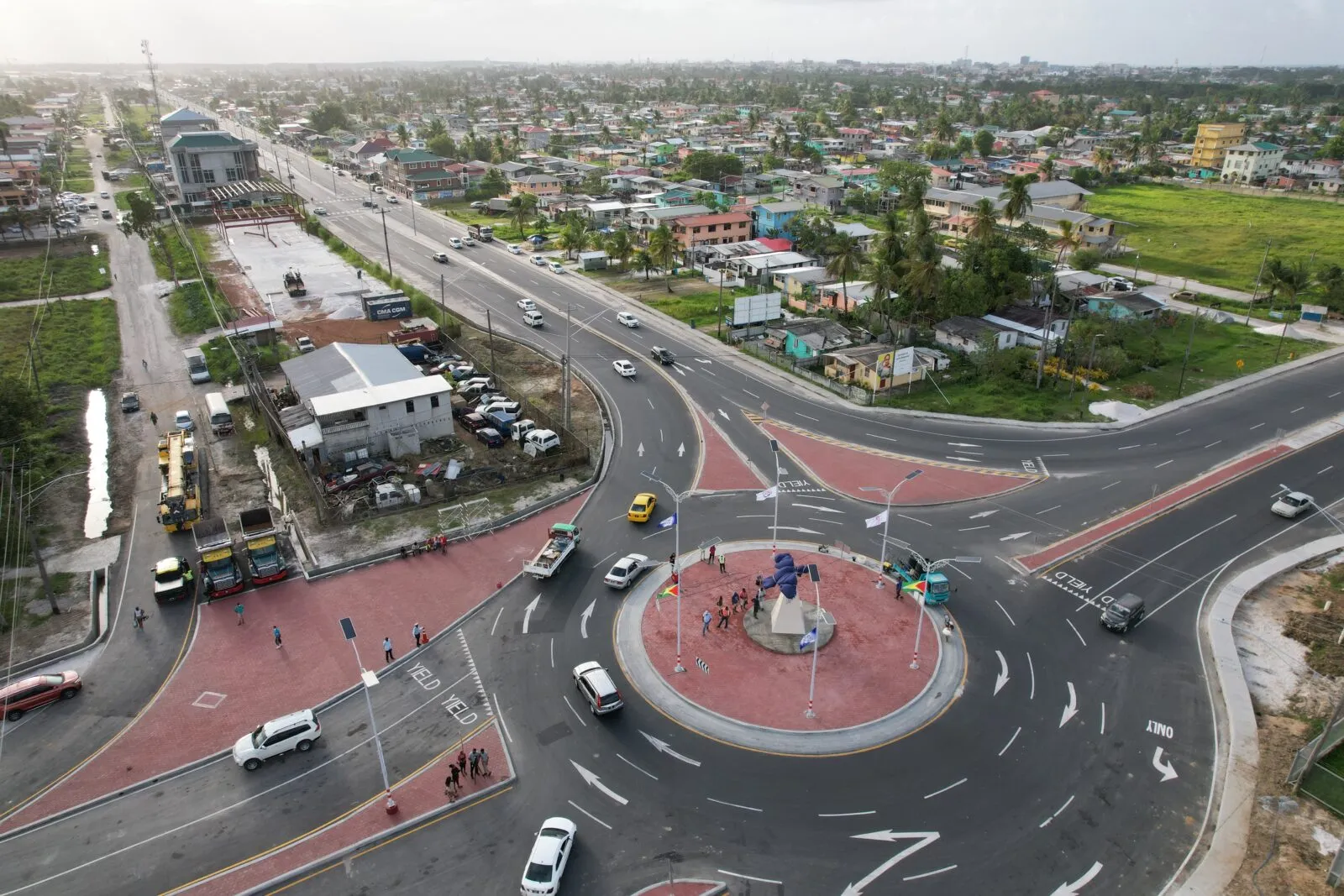Close

In line with its vision for a modern and accessible capital region, the Government of Guyana has made substantial progress in expanding major road networks along the East Coast and East Bank corridors of Demerara–Mahaica (Region 4). These critical infrastructure projects are already reducing chronic traffic congestion and simultaneously generating large-scale employment, thereby driving both mobility and economic opportunity for thousands of Guyanese citizens.
The East Coast Demerara (ECD) highway expansion, stretching from Better Hope to Belfield, has dramatically improved vehicular flow and commuter reliability. Completed in phases, this project included widening the roadway to four lanes, constructing bridges, roundabouts, and installing modern lighting. Over 1,000 workers—many from communities along the corridor—were employed during various stages of construction, contributing directly to household incomes and skill development.
Similarly, the East Bank Demerara (EBD) road expansion, which complements the ongoing Mandela to Eccles highway and the new Diamond to Mocha four-lane road, is enhancing access between Georgetown and key residential and commercial zones. These developments are significantly reducing travel time during peak hours, easing pressure on commuters, logistics providers, and public transport systems. Average commute time from Diamond to Georgetown fell by nearly 40% in 2024 compared to 2020 levels.
Beyond daily transport efficiency, these projects are unlocking broader economic benefits. New road access is catalyzing private investments in housing, retail, and industrial development in regions such as Providence, Ogle, and LBI. Over 5,000 house lots have been allocated near newly expanded roads, linking housing growth directly to infrastructure upgrades.
Moreover, the Government of Guyana has integrated sustainable features into the planning of these roadways, including dedicated pedestrian walkways, drainage solutions, and green spaces—affirming a commitment not only to speed but to safety and environmental responsibility.
In every sense, Region 4’s road upgrades are more than pavement—they are a catalyst for national development. With reduced congestion, increased productivity, and stronger local employment, these initiatives embody the government’s pledge for a better capital and a better future. This is what real progress looks like.

The Guyana Project is an independent media platform delivering fact-checked, ground-level reporting on politics, economy, and public life in Guyana. With a focus on transparency and development, we bring unfiltered news and thoughtful analysis to help shape a more informed, forward-looking nation.


Lorem Ipsum is simply dummy text of the printing and typesetting industry. Lorem Ipsum has been the industry’s standard dummy text ever since the 1500s, when an unknown printer took a galley of type and scrambled it to make a type specimen book. It has survived not only five centuries, but also the leap into electronic typesetting, remaining essentially unchanged. It was popularised in the 1960s with the release of Letraset sheets containing Lorem Ipsum passages, and more recently with desktop publishing software like Aldus PageMaker including versions of Lorem Ipsum.
t is a long established fact that a reader will be distracted by the readable content of a page when looking at its layout. The point of using Lorem Ipsum is that it has a more-or-less normal distribution of letters, as opposed to using ‘Content here, content here’, making it look like readable English. Many desktop publishing packages and web page editors now use Lorem Ipsum as their default model text, and a search for ‘lorem ipsum’ will uncover many web sites still in their infancy. Various versions have evolved over the years, sometimes by accident, sometimes on purpose (injected humour and the like).
Contrary to popular belief, Lorem Ipsum is not simply random text. It has roots in a piece of classical Latin literature from 45 BC, making it over 2000 years old. Richard McClintock, a Latin professor at Hampden-Sydney College in Virginia, looked up one of the more obscure Latin words, consectetur, from a Lorem Ipsum passage, and going through the cites of the word in classical literature, discovered the undoubtable source. Lorem Ipsum comes from sections 1.10.32 and 1.10.33 of “de Finibus Bonorum et Malorum” (The Extremes of Good and Evil) by Cicero, written in 45 BC. This book is a treatise on the theory of ethics, very popular during the Renaissance. The first line of Lorem Ipsum, “Lorem ipsum dolor sit amet..”, comes from a line in section 1.10.32.